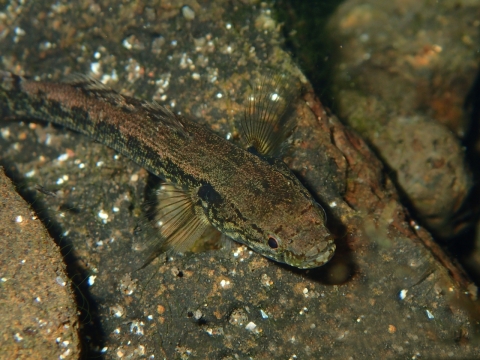
Phylogeography of Eleotris fusca (Teleostei: Gobioidei: Eleotridae) in the Indo-Pacific area reveals a cryptic species in the Indian Ocean. Marion I. Mennesson, Céline Bonillo, Eric Feunteun, Philippe Keith. Conservation Genetics. pp.1-14. https://doi.org/10.1007/s10592-018-1063-x
Eleotris fusca is a widespread amphidromous species, its life cycle is characterised by a marine pelagic larval phase allowing the species to disperse in the ocean and then to recruit to remote island rivers. The population structure of E. fusca over its Indo-Pacific distribution range (Western Indian Ocean to French Polynesia, Pacific Ocean) was evaluated. We analysed a section of mitochondrial COI of 557 individuals sampled from 28 islands to visualise the population structure. Two distinct genetic groups appeared, one in the Indian Ocean and the other in the Pacific Ocean. The two phylogenetic trees based on complete mitogenomes (mtDNA) and the nuclear Rhodopsin (Rh) gene have were realised and showed the same genetic pattern: two different groups belonging to the Indian and the Pacific oceans, which supported species level differentiation. These analyses revealed the presence of two sister species confounded until present under the name of Eleotris fusca. One of them is cryptic and endemic of the Indian Ocean and the other one is the true E. fusca, which keeps, nevertheless, its status of widespread species.
BOREA Contact: Marion Mennesson, mmenness@edu.mnhn.fr
